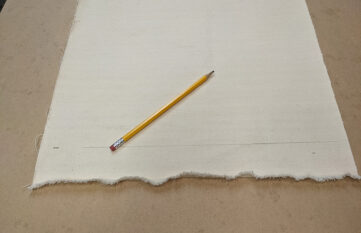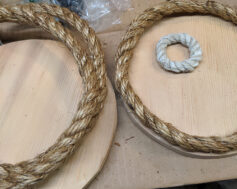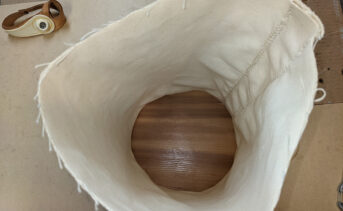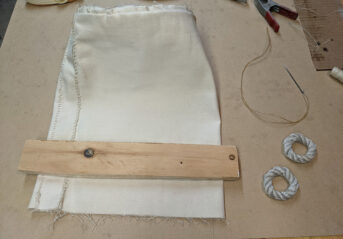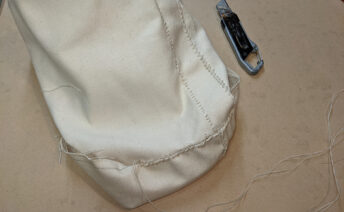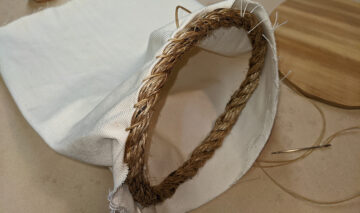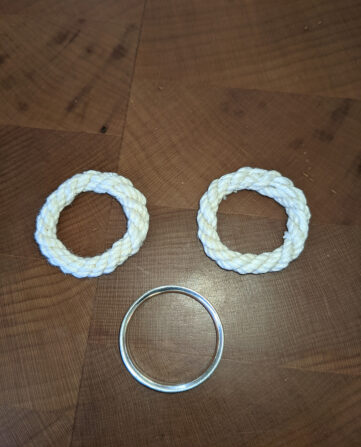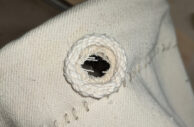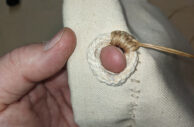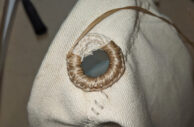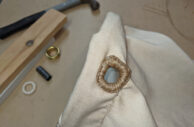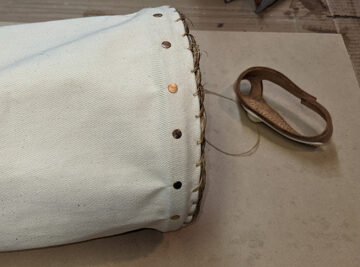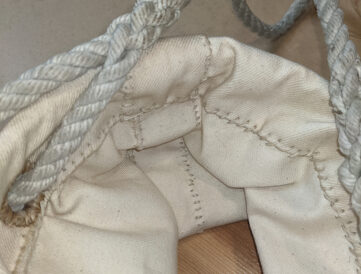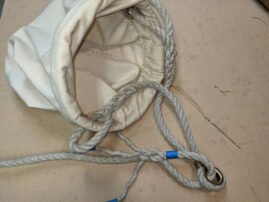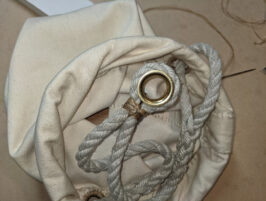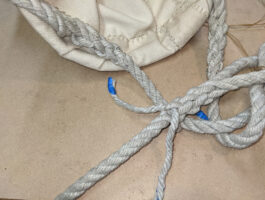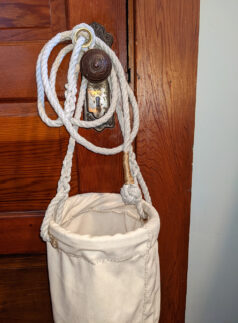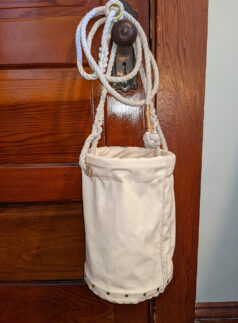March 11, 2021
Canvas Sailor’s Bucket
We will be continuing our canvas projects today by showing you a step by step tutorial for building your own canvas sailor's bucket.

Written by Kirk Cusic, Education Director
Hi everyone! Today's At Home project is going to bring together many of the skills we have discussed in previous posts. We will be continuing our canvas projects today by showing you a step by step tutorial for building your own canvas sailor's bucket. This is another project inspired by "The Arts of the Sailor" written by Hervey Garret Smith. In the book he details the design and building of a canvas bucket and discusses its superiority to any other type of bucket that could be used on board a vessel. A proper sailor's bucket fit for any vessel is how he describes today's project!
Supplies:
- - Duck canvas, no lighter than #12 (I used #8)
- - 1 square yard will make 2 buckets
- - Waxed sail thread and sewing needle.
- - Sail Palm (I only needed it a few times)
- - About 20' of 1/2 inch, 3 strand line
- - Short length of light 3 strand line for eyelet grommets
- - 3/4 inch brass round thimble.
Instructions for a bucket approximately 12"x 9 1/2":
click each image to view larger
Step 5: The top edge of the bucket will need to be stiffened to help it stand up. This is traditionally accomplished by enclosing a mast hoop of the appropriate size in the top seam. If you are unable to source a 9" diameter mast hoop you can make your own hoop by steaming and bending a piece of ash or white oak. Hervey Garret Smith suggests using a piece 3/8" x 3/4" and riveting the scarphed ends together to form a hoop or in a pinch you can also use a grommet as well, as depicted. Instructions for making grommets were previously discussed here.
Step 10: Attach them on opposite sides of the bucket under the wooden hoop or grommet using the hitched eyelet techniquepreviously described here).
Step 12: For the bail (or becket) middle a length of line around a 3/4 inch round brass thimble and clap on a round seizing (previously described here) to hold it in place.
Step 13: Attach the ends of the bail with eye splices (previously described here) through the hitched eyelets in the top edge of the bucket.
Step 14: Attach a heaving line through the brass thimble with another eye splice and finish the end with a wall and crown, manrope or other knob knot. I used about 8 feet of line which was about 6 feet long once I spliced it and added the knob knot at the end. Make your heaving line long enough to reach the water from the deck of your vessel.
Our Director of Education Kirk Cusic reports: "I tend to agree with Hervey, it is far superior to any commercially available bucket. I can't wait to see it after it has been used a few times as it ages and gathers experience. If you make one for yourself, please remember to post it to our social media. We always love to see your At Home Projects. "
As with all our At Home Activities we would love to hear what you thought of this project! Share your photos with us by emailing us at [email protected], posting on our Facebook page or tagging us on Instagram @herreshoff #HerreshoffFromHome.





